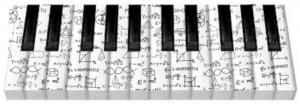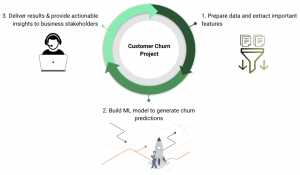Growing up in a family of musicians, I never expected to end up in Silicon Valley. My parents tried to interest me in music from an early age. It soon became clear that music wasn’t my calling. Case in point: One day when I was in high school, as I sat next to my mother who was giving me a piano lesson, I had the burning desire to get up and look at the problem I got wrong on my calculus test.

There was a rush of adrenaline I got from figuring out the hardest problem on my math exams that learning Bach could never give me. Enjoying math as an adolescent led me to the realization that I had a passion for problem-solving, which would eventually translate into an interest in engineering.
Pivoting to Tech
In my freshman year at UC Berkeley, although I opted for engineering, I had no idea what I actually wanted to do. Being at Berkeley, I couldn’t escape the hype surrounding tech and eventually gave in by taking an introductory computer science course. Inspired by this class, I went to see a school counselor and asked him how I could major in computer science. I was met with a small chuckle and a reply: “maybe you should consider another major.”
This wasn’t the most encouraging response, but considering that I didn’t have an extensive coding background, I realized that getting into one of the most competitive computer science programs in the country wouldn’t be easy. I was determined. Three years later, after countless hours of coding and sleepless nights, I ended up graduating with a CS degree and a minor in data science.
Even though I knew I wanted to go into tech, my first job after freshman year was working as a cashier at a clothing store in my local mall. I thought I could do more than counting change. So I caught the CEO during a coffee run and pitched the idea of using data science to help his store optimize its inventory strategy and increase sales across all of their locations. Five minutes later, I got my first internship as a part-time data analyst for the upcoming summer.
Coming to Palo Alto Networks
My first internship was very gratifying, but it left me wanting more. I wanted to expand on my experience and work for a company that could further cultivate my skills and passions. Enter Palo Alto Networks.
In my junior year of college, I took a cybersecurity class, which quickly became my favorite. So when I saw an opening for a data science intern at Palo Alto Networks, I jumped at the opportunity. After a resume drop and a series of interviews, I was hired for my next internship.
I was assigned a large-scale root cause analysis project to automate the process of customer case deflection, with the end goal of saving the company millions of dollars per quarter. In this project, I honed in on data science techniques such as natural language processing (NLP) and anomaly detection to highlight potential issues in tech support files.
Everyday, I was introduced to new technologies, platforms, and strategies that I had never heard of before. Through interning at Palo Alto Networks, I learned how to fluently speak the language of data science.
All of these skills came together at the end of my internship when my co-intern, Stefan Schlotter, and I demonstrated our root cause analysis project at the IT department-wide Internfest competition. We presented our strategy on automating the manual process of a tech support engineer combing through a large amount of tech support files (think 200,000+ lines, and over 150 of these files). The judges saw high potential in the time and money our strategy could help save for the company. As a result, we won first place!
Life as a Data Scientist
At the end of my Palo Alto Networks internship, I was hooked. Beyond gaining valuable industry experience, it was incredibly refreshing to feel like I finally belonged somewhere. In large part it’s because the Data Science team in IT is so amazing to work with. Needless to say, there was no hesitation when the company offered me a full-time role as an IT Data Scientist!
Today, I work on analyzing customer retention, specifically, predicting customer churn. For a B2B company like Palo Alto Networks, customer retention is a vital metric that needs to be not only constantly monitored – but optimized.
When you have a lot of data, it’s like swimming in an ocean of information. My job is to take all of that information, extract key features, and feed it into a machine learning model to generate churn predictions. The goal is to predict which customers will churn before it actually happens so that we can take action to prevent it.
On a daily basis, I work with the rest of the talented IT Data Science team to engineer and automate this process for different product lines and refresh our machine learning models to deliver more accurate results. But the job doesn’t stop at modeling. Once we generate these predictions, further business validation is executed to make sure that the predictions actually make sense. Besides answering the question of who will churn, we also need to answer why, so that other teams can engage these customers to keep them satisfied with our products.

In my short time at Palo Alto Networks, I’ve been able to better understand not only how to process and use data to produce meaningful results, but also, how to translate numbers into insights and business decisions. It’s hugely motivating for me that our work is integral to maintaining a healthy customer base for our company.
The Best Advice a 22-Year-Old Can Give
I may not have decades of career insights to share, but I would say that it hasn’t always been easy to get to where I am today. Success always looks rosy on the outside. The reality is that every step of the way involves a lot of hard work, whether it’s going through many late nights debugging code, or receiving rejection from other internships. While I have a budding career that I’m very grateful for, I had to put away plenty of intrusive thoughts or nagging doubts. For each moment you may feel like you’re not enough, find one more opportunity, and soon enough, you’ll be able to sit back and appreciate how far you’ve come along.




